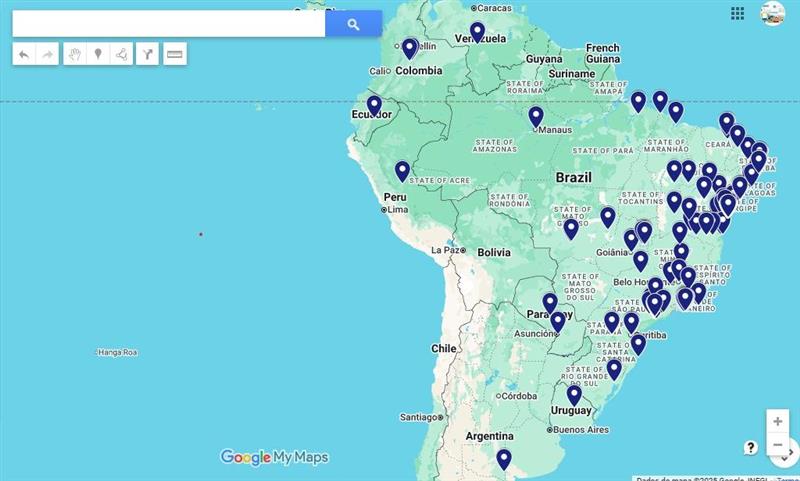Monthly Survey of Trade
Retail sales change by -0.1% in October
December 08, 2021 09h00 AM | Last Updated: December 09, 2021 01h56 PM

After two consecutive months of decrease, retail trade sales remained stable (-0.1%) from September to October. With this result, retail was 6.4% below the record level of November 2020. Both in the year and in 12 months, the sector has a cumulative increase of 2.6%. These results are from the Monthly Survey of Trade, released today (September 8) by the IBGE.
Leveled off negative results were observed in five of the eight activities surveyed. Among these, the most significant changes were those of Books, newspapers, magazine and stationery (-1.1%), Furniture and household appliances (-0.5%), Fuels and lubricants (-0.3%) and Hypermarkets, supermarkets, food products, beverages and tobacco (-0.3%).
“This change of -0.1% is composed of leveled off results in almost all the activities. So that none of them is a single highlight. Some months ago, the sector of Hypermarket and supermarkets, which accounts for a big share, drive the index upwards. That was not the case in October, bevertheless, a month marked by a balance between the sectors,” says Cristiano Santos, manager of the survey.
The segment of Pharmaceuticals, medical and orthopedic articles, toiletries and cosmetics (-0.1%) was also leveled off from September to October.
The sectors that recored increases in the period were Fabric, apparel and footwear (0.6%), Other personal and domestic articles (1.4%) and Offica, computer and communication material and equipment (5.6%). “The activity of fabric, apparel and footwear was one of the activities that fell in the beginning of the pandemic because its purchase is often based on trying on the product. There was significant decrease from March to April last year anf the patter of conumption did not go back to its previous status after that,” says Cristiano.
“There was a readequation of companies regarding sales strategies, by adopting e-commerce. Major brands in the beginning of the second quarter in the year also announced other platforms and that added to sales at a certain moment, but this movement was refrained as the income of families has not increaased,” he explains.
In extended retail trade, which includes vehicles, motorcycles, parts and pieces and construction material, volume of sales retreated 0.9% against September. In this comparison, vehicles, motorcycles, parts and pieces fell by 0.5%, whereas construction material fell 0.9%.
Retail falls by 7.1% against October last year
Retail trade fell 7.1% in October in relation to the same onth a year aho. That is the third consecutive increase in this indicator. All the eight activities surveyed recorded decreases, with a highlight to Furniture and household appliances (-22.1%), Office, computer and communication material and equipment (-11.0%) and Books, newspapers, magazines and stationery (-7.9%).
The other segments that recorded decrease in comparison with October last year were: Fuels and lubricants (-7.7%), other personal and domestic articles (-7.2%), Hypermarkets, supermarkets, food products, beverages and tobacco (-5.6%), Fabric, apparel and footwear (-2.0%) and Pharmaceuticals, medical and orthopedic articles, toiletries and cosmetics (-0.2%).
“In October last year, there was a record in the PMC time series . That means the basis for comparison was extremely high. The decrease was balanced between all the negative activities,” the researcher says.
Extended retail trade, which also recorded a decrease of 7.1% in this comparison, had a decrease of 4.0% in the segment of Vehicles, motorcycles, parts and pieces and of 13.7% in the sector of Construction material.
Retail up in 17 Federation Units
From September to October, retail trade recorded positive results in 17 of the 27 Federation Units, with a highlight to Acre (3.0%), Alagoas (2.4%) and Rondônia (2.4%). Among the states that recorded a decrease, Amapá (-2.8%), Roraima (-2.3%) and Rio de Janeiro (-2.2%) stand out.
Negative results also prevailed in the extended retail trade. Of the 17 Federation Units with drops in volume of sales, the highlights were Rio de Janeiro (-5.0%), Amapá (-4.0%) and Goiás (-3.8%). Among the positive results, the highlights were Tocantins (8.1%), Alagoas (4.4%) and Rio Grande do Sul (2.2%).
Against October last year, retail trade recorded negative results in 26 Federation Units. Bahia (-14.1%), Sergipe (-12.6%) and Paraíba (-12.2%) stood out. Extended retail trade increased in 23 Federation Units in this same comparison, being Amapá (-14.9%), Amazonas (-12.4%) and Paraná (-11.7%), responsible for the biggest changes.
More about the survey
PMC produces indicators to monitor the short-term behavior of retail trade in Brazil, investigating the gross revenue of formal enterprises with 20 or more employed persons and whose major activity is retail trade.
Having started in 1995, the PMC brings monthly results of changes in sales volume and nominal revenue for retail trade and extended retail trade (cars and construction material) for Brazil and Federation Units. The data collection technique includes the pre-filled electronic questionnaire (CASI) and personal interview with paper questionnaire (PAPI). The results are availabe at Sidra.

















